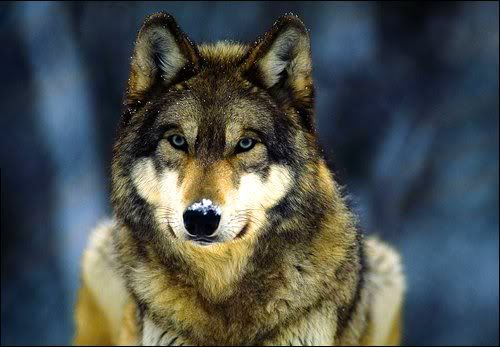|
|
Wolf
Apr 14, 2009 15:05:15 GMT -5
Post by Revenge on Apr 14, 2009 15:05:15 GMT -5
Wolves
Of Fear and Wonder: Looking very much like domestic dogs, wolves inspire fear and wonder. Look at the large breed domestic dogs to get a sense of the body configuration of the wolf — muscular, deep-chested bodies covered with fur, a long muzzle and large ears. They range in color according to species, but a consistent characteristic is the wolf's long, sharp canine teeth, excellent for stabbing prey.
The Iconic Gray: The most iconic wolf species is the gray wolf. Its mournful howl pierces the silent night as a way to make its presence known and to defend territory. The gray wolf is one of the largest members of the canid family.
The Reintroduced Red: The red wolf was believed to be extinct since the 1970s. A few remaining individuals were reintroduced into the wild and have established a slim population of 50 wolves.
DID YOU KNOW?
The Howling Wolf: Wolves howl to declare territory, call pack members to a specific location or strengthen social bonds. Small packs tend to howl less than large packs, so as to draw less attention to themselves.
The Frightened Wolf: A frightened wolf will try to make itself look small and inconspicuous by flattening its ears against its head and tucking its tail between its legs.
Ancestor of the Dog: It's generally accepted that the domestic dog evolved from the gray wolf. All domestic dogs came from Old World gray wolves; North American gray wolves were never domesticated.
Awesome Jaws: A wolf's jaw can exert 1,500 pounds of pressure per square inch — that's twice as strong as a German shepherd. |
|
|
|
Wolf
Apr 14, 2009 15:11:07 GMT -5
Post by Revenge on Apr 14, 2009 15:11:07 GMT -5
The Wolf
Wolf Profile
Wolves are legendary because of their spine-tingling howl, which they use to communicate. A lone wolf howls to attract the attention of his pack, while communal howls may send territorial messages from one pack to another. Some howls are confrontational. Much like barking domestic dogs, wolves may simply begin howling because a nearby wolf has already begun.
Wolves are the largest members of the dog family. Adaptable gray wolves are by far the most common and were once found all over the Northern Hemisphere. But wolves and humans have a long adversarial history. Though they almost never attack humans, wolves are considered one of the animal world's most fearsome natural villains. They do attack domestic animals, and countless wolves have been shot, trapped, and poisoned because of this tendency.
In the lower 48 states, gray wolves were hunted to near extinction, though some populations survived and others have since been reintroduced. Few gray wolves survive in Europe, though many live in Alaska, Canada, and Asia.
Red wolves live in the southeastern United States, where they are endangered. These animals actually became extinct in the wild in 1980. Scientists established a breeding program with a small number of captive red wolves and have reintroduced the animal to North Carolina. Today, perhaps 100 red wolves survive in the wild.
The maned wolf, a distant relative of the more familiar gray and red wolves, lives in South America. Physically, this animal resembles a large, red fox more than its wolf relatives.
Wolves live and hunt in packs of around six to ten animals. They are known to roam large distances, perhaps 12 miles (20 kilometers) in a single day. These social animals cooperate on their preferred prey—large animals such as deer, elk, and moose. When they are successful, wolves do not eat in moderation. A single animal can consume 20 pounds (9 kilograms) of meat at a sitting. Wolves also eat smaller mammals, birds, fish, lizards, snakes, and fruit.
Wolfpacks are established according to a strict hierarchy, with a dominant male at the top and his mate not far behind. Usually this male and female are the only animals of the pack to breed. All of a pack's adults help to care for young pups by bringing them food and watching them while others hunt.
Wolf Range (In the yellow)
Fast Facts
Type: Mammal
Diet: Carnivore
Average lifespan in the wild: 6 to 8 years
Size: Head and body, 36 to 63 in (91 to 160 cm); Tail, 13 to 20 in (33 to 51 cm)
Weight: 40 to 175 lbs (18 to 79 kg)
Group name: Pack
Protection status: Endangered
Size relative to a 6-ft (2-m) man 
|
|
|
|
Wolf
Apr 14, 2009 15:14:21 GMT -5
Post by Revenge on Apr 14, 2009 15:14:21 GMT -5
|
|





